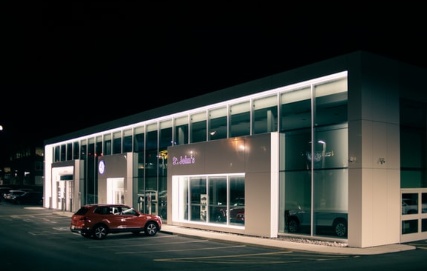











Buying a car with a residual value is possibly the most favorable way to save when purchasing a new car or even to aim for a more expensive model compared to traditional leasing. This is achieved by not paying the entire price of the car, as the buyer is not required to cover the residual value at the end of the leasing agreement.
The residual value of a car is the minimum value set by the car dealership at the end of the lease term. For example, if the price of a new car is 50 thousand euros, and the lease term is 5 years, we can estimate that the residual value will average around 15 thousand euros (or about 30% of the new car's price). Adding a 10% down payment, over five years, the buyer will have to cover a total of 30 thousand euros in monthly payments: a significantly smaller amount compared to other installment purchase methods.
The residual value is determined based on many criteria. The main one is mileage. The car seller estimates how many kilometers the car will cover during the lease term, taking into account the buyer's habits. For example, if you drive on average up to 20 thousand kilometers per year and wish to choose a five-year lease, the car's residual value will be calculated for a mileage of 100 thousand kilometers. However, if the agreed mileage is exceeded, the buyer must compensate for the difference. One of the most common methods is a small fee for each additional kilometer driven.
Another important criterion that affects the car's residual value is its demand in the market. Demand can depend on a multitude of aspects starting from the car brand or engine type and ending with color. By purchasing a car with a higher residual value, you can expect lower monthly payments. Additionally, you can negotiate this with the seller and configure a potentially more desirable car when it's time to part ways with it at the end of the lease term.
In addition to more favorable options by paying a lower monthly payment to acquire a more expensive car, buying with a residual value offers other advantages.
One such advantage is lower personal finance risk. For example, if a recession begins and car values are declining, which is most likely for more expensive cars, you can choose to return the car to the seller if its residual value is higher than the market price. You can then acquire a new car without paying the remaining installments.
Another advantage is the ability to recover some of the payments. This can be done if the market value of the car is higher than the specified residual value at the end of the lease term. You can then sell the car yourself, return the residual value, and perhaps recover an amount that matches the size of the down payment. Although this method requires some caution and luck, a significant number of new car owners have taken advantage of this benefit.
Indeed, you will have the option to buy the car at the end of the lease agreement.
Another attractive option is to pay higher monthly installments and cover part of the residual value; this money can later turn into the down payment for a new car that you have saved for over several years. Operational leasing can be a great way to constantly drive the latest car model.





Welcome to the demo version of New Wheels
Many features are operational, but there may be disruptions in their functioning. There may also be inaccuracies in the information provided.
If you have any comments or suggestions - we look forward to your emails at [email protected]
The Naujiratai.lt team